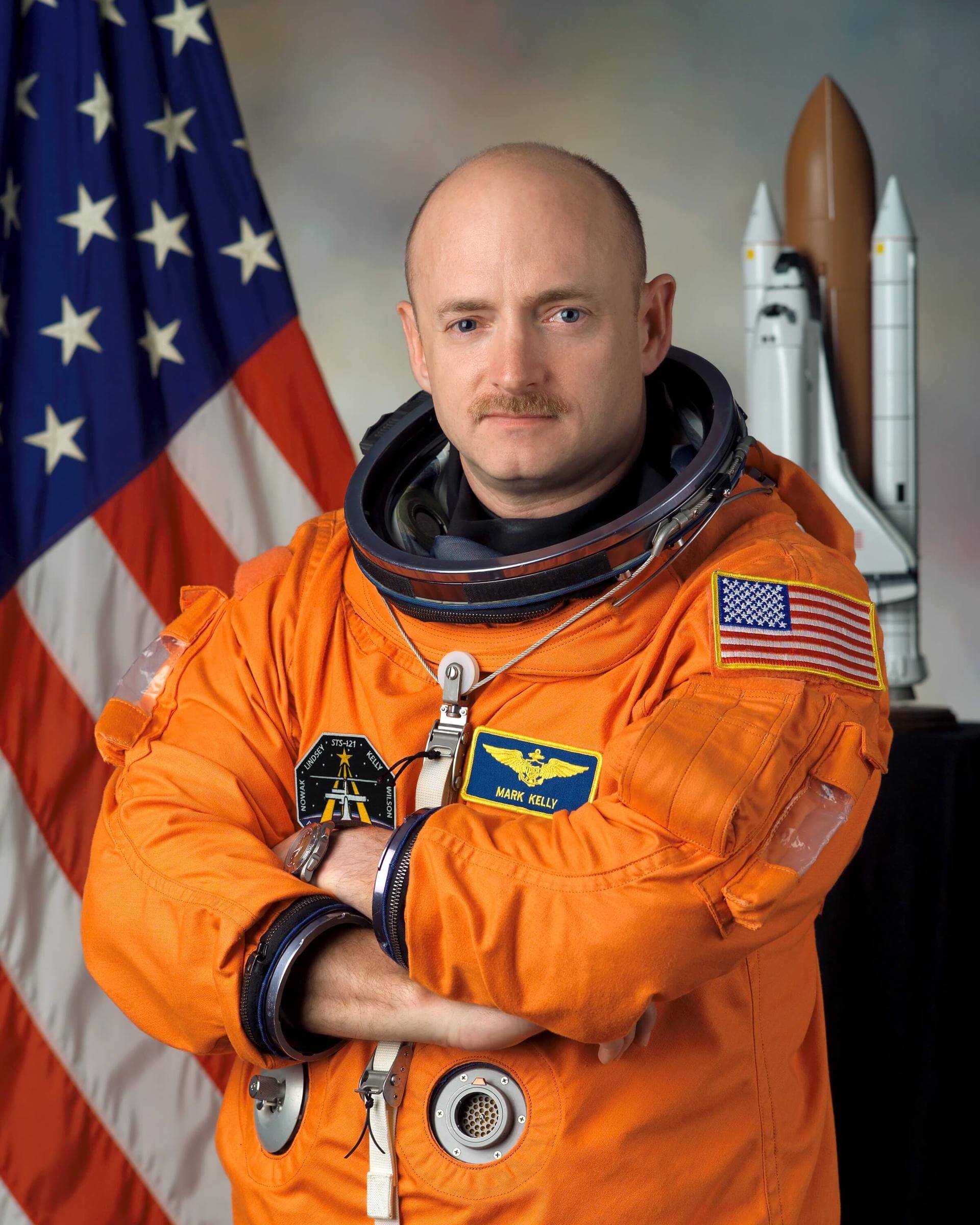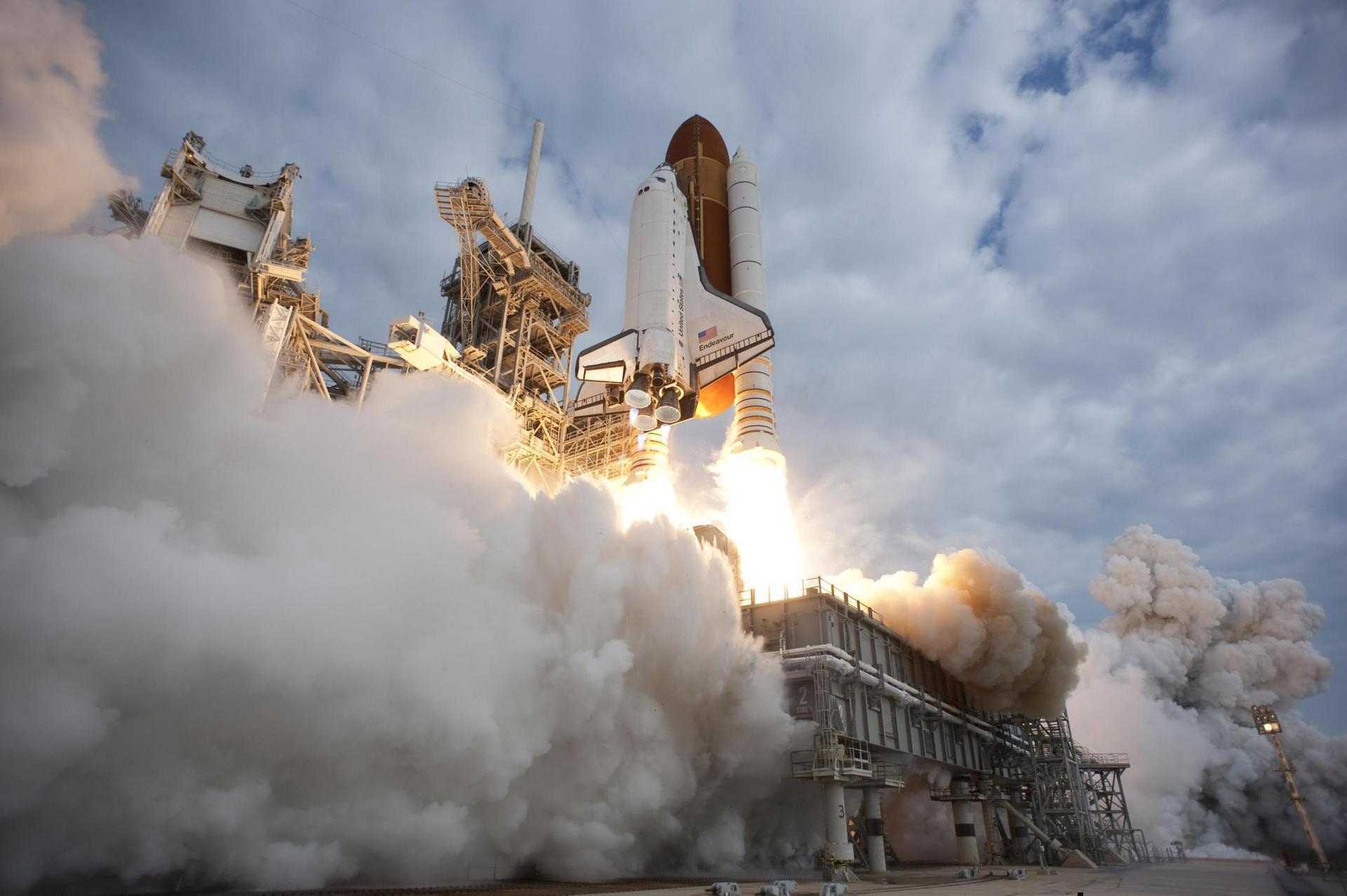Mark Kelly
American - (NASA)
Retired
Date of Birth: Feb. 21, 1964
Age: 61
Mark Edward Kelly is a retired American astronaut, engineer, and retired U.S. Navy Captain. He is the husband of former Congresswoman Gabrielle Giffords, and is an author, political activist, and aerospace executive and consultant. A naval aviator, Kelly flew combat missions during the Gulf War. He was selected to become a NASA Space Shuttle pilot in 1996 and flew his first mission in 2001 as pilot of STS-108. He piloted STS-121 in 2006 and commanded STS-124 in 2008 and STS-134 in 2011. STS-134 was his final mission and the final mission of Space Shuttle Endeavour. His wife was the target of an attempted assassination in Tucson, Arizona, on January 8, 2011. After the shooting, in which six people were killed, both Kelly and Giffords were thrust into the media spotlight. His wife's shooting led to a broad national conversation ranging from the duties of a husband to what is acceptable civil discourse. Kelly's identical twin brother, Scott Kelly, is also an astronaut. The Kelly brothers are the only known siblings to have both traveled in space. In 2015, Scott Kelly began a mission spending a year in space on the International Space Station. He returned to Earth on March 1, 2016, after 340 days in space. During and after Scott's year-long mission, the brothers were studied to find physical differences caused by living in space versus a baseline on Earth.
Space Shuttle Endeavour / OV-105 | STS-108
National Aeronautics and Space Administration | United States of AmericaKennedy Space Center, FL, USA
Dec. 5, 2001, 10:19 p.m.
Status: Success
Mission:
STS-108 was a Space Shuttle mission to the International Space Station (ISS) flown by Space Shuttle Endeavour. Its primary objective was to deliver supplies to and help maintain the ISS. It was the 12th shuttle flight to visit the International Space Station and the first since the installation of the Russian airlock called Pirs on the station. Endeavour delivered the Expedition 4 crew to the orbital outpost. The Expedition 3 crew returned to Earth on Endeavour.
Low Earth OrbitSpace Shuttle Discovery / OV-103 | STS-121
National Aeronautics and Space Administration | United States of AmericaKennedy Space Center, FL, USA
July 4, 2006, 6:37 p.m.
Status: Success
Mission:
STS-121 was a 2006 NASA Space Shuttle mission to the International Space Station (ISS) flown by Space Shuttle Discovery. The main purposes of the mission were to test new safety and repair techniques introduced following the Columbia disaster of February 2003 as well as to deliver supplies, equipment and European Space Agency (ESA) astronaut Thomas Reiter from Germany to the ISS.
Low Earth OrbitSpace Shuttle Discovery / OV-103 | STS-124
National Aeronautics and Space Administration | United States of AmericaKennedy Space Center, FL, USA
May 31, 2008, 9:02 p.m.
Status: Success
Mission:
STS-124 was a Space Shuttle mission, flown by Space Shuttle Discovery to the International Space Station. Discovery launched on 31 May 2008 at 17:02 EDT, moved from an earlier scheduled launch date of 25 May 2008, and landed safely at the Kennedy Space Center's Shuttle Landing Facility, at 11:15 EDT on 14 June 2008.
Low Earth OrbitSpace Shuttle Endeavour / OV-105 | STS-134
National Aeronautics and Space Administration | United States of AmericaKennedy Space Center, FL, USA
May 16, 2011, 12:56 p.m.
The National Aeronautics and Space Administration is an independent agency of the executive branch of the United States federal government responsible for the civilian space program, as well as aeronautics and aerospace research. NASA have many launch facilities but most are inactive. The most commonly used pad will be LC-39B at Kennedy Space Center in Florida.
Falcon 9
Starlink Group 6-97
Space Launch Complex 40 - Cape Canaveral SFS, FL, USAA batch of 29 satellites for the Starlink mega-constellation - SpaceX's project for space-based Internet communication system.
PSLV-DL
EOS-N1 and others
Satish Dhawan Space Centre First Launch Pad - Satish Dhawan Space Centre, IndiaSmall Earth observation satellite from NewSpace India Limited (NSIL) for an "Indian strategic user", details TBD. This launch will also carry 18 o…
Falcon 9
Pandora / Twilight rideshare mission
Space Launch Complex 4E - Vandenberg SFB, CA, USAThe Pandora small satellite was selected in 2021 as an inaugural mission in NASA’s Astrophysics Pioneers Program. It includes a 0.45-meter telescope …
Falcon 9
Starlink Group 6-96
Space Launch Complex 40 - Cape Canaveral SFS, FL, USAA batch of 29 satellites for the Starlink mega-constellation - SpaceX's project for space-based Internet communication system.
Falcon 9
Starlink Group 6-88
Space Launch Complex 40 - Cape Canaveral SFS, FL, USAA batch of 29 satellites for the Starlink mega-constellation - SpaceX's project for space-based Internet communication system.



